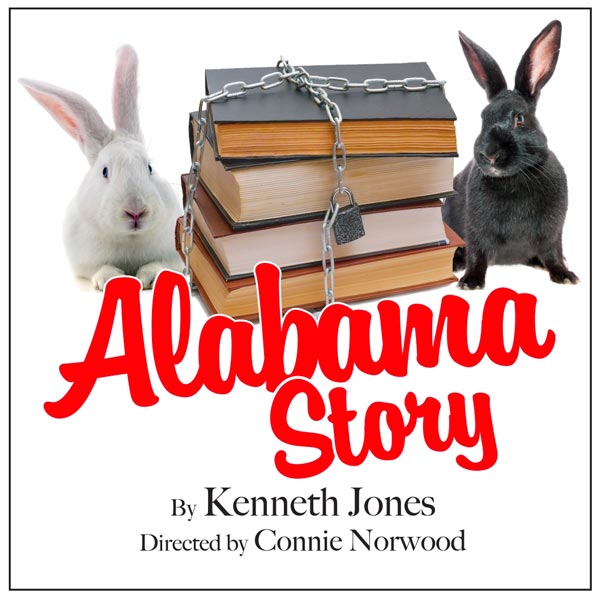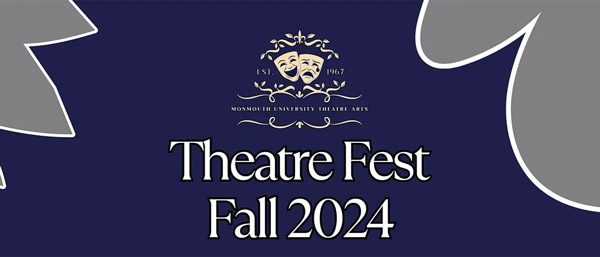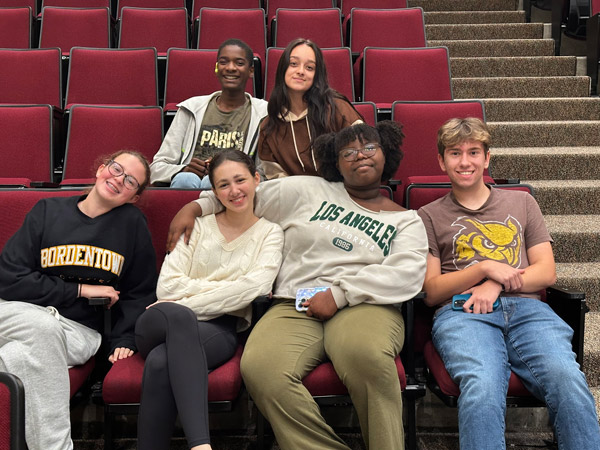South Camden Theatre Company presents "Alabama Story"
Sunday, September 24, 2023 @ 2:00pm

South Camden Theatre Company
400 Jasper Street, Camden, NJ 08104

Alabama Story by Kenneth Jones
As the Civil Rights movement is brewing, a controversial children’s book about a black rabbit marrying a white rabbit stirs the passions of a segregationist State Senator and a no-nonsense State Librarian in 1959 Montgomery, Alabama. Meanwhile, the story of two childhood friends — an African-American man and a woman of white privilege, reunited in adulthood — provides a private counterpoint to the public events swirling in the state capital. Political foes, star-crossed lovers, and one feisty children’s author inhabit the same page in a Deep South of the imagination that brims with humor, heartbreak, and hope. Inspired by true events.
Kenneth Jones, the playwright stated, “I didn’t want to write a docudrama that told the strict truth, but to create a collage of a play that was a mashup of theatrical forms. I love telling the artistic truth. I say that the play is set in “the Deep South of the imagination.” So, what you will experience is a political thriller, a workplace comedy, a courtroom drama, a romance, a history play, and more.”
Ms. Norwood, our director, is excited to take the helm of South Camden Theatre’s production of “Alabama Story.” She was selected to direct this play by Artistic Director Dawn Varava, “because of her unique ability to tell complex stories and to bring the play’s characters to life on our stage.” The cast selection was made from a large group of actor auditions. Anne Allen plays the “real-life” librarian, Emily Wheelock Reed. Eric Rupp plays Garth Williams, the writer/illustrator of “The Rabbit’s Wedding” and others. Gene Dale plays Senator E.W. Higgins, the segregationist senator. Emily-Grace Murphy plays Lily, a white woman of privilege, opposite Maurice Tucker as Joshua Moore, an upwardly mobile middle-class African American. Adam Brooks appears as Thomas Franklin, Emily Reed’s reference librarian.
Kenneth Jones also commented on his research for the play. “Emily Reed’s story was widely documented in newspapers and magazines at the time, so a lot of source material existed, allowing me to draw from and expand upon actual language and public personalities. In fact, the play’s most outrageous proclamations from the bullying politician (renamed Senator Higgins) are direct quotes from the man who used to be known as “Big Ed.” And when I read Emily’s statement that “the free flow of information is the best means to solve the problems of the South, the nation and the world,” I was inspired by the grandeur and universality of the sentence: This is a story about access, a basic human right. Little did I know at the time that the words “free flow of information” make up one of the foundational tenets of librarianship itself.”
Kenneth continued about his hopes for those who see “Alabama Story,” “Mostly, I hope that “Alabama Story” sparks a memory of a beloved book, the person who gave it to you and the day that you realized that a “turning of the page” — whether moving forward in a book or in your personal evolution — could be both terrifying and wonderful. Maybe the play will also be a reminder that no matter what our differences, on some level, we all share the same story. “
“Alabama Story is exuberant, hilarious, and timely. A children’s picture book is at the heart of Kenneth Jones’ crowd-pleasing and imaginatively theatrical comedy-drama inspired by the real-life conflict between an enlightened librarian and a bigoted politician. At a time when intolerance is on the upswing and empathy is under siege, Alabama Story is just the play we need. Jones brings an exuberant wit to this potentially preachy material.” — St. Louis Post DispatchAbout the play…
“A disarmingly engaging drama.” “Thoughtfully written.” “Nuanced.” “Well-layered.” “A modest little gem of a production.” — Atlanta Journal Constitution
“An Alabama Story that has national relevance. The 2015 play feels timely, resonating with this era’s racial tensions, the ‘she persisted’ meme, and continuing controversy over the Old South’s legacy. The topicality of Alabama Story infuses a theatrical moment that feels spontaneous yet intriguingly layered.” — The Washington Post
For information on how your event can be listed, click here
Advertise with New Jersey Stage for $50-$100 per month,
click here for info
FEATURED EVENTS

Theatre Fest Fall 2024 – Music and Theatre Collaboration: Celebrating Stephen Sondheim
Friday, November 22, 2024 @ 8:00pm
Monmouth University - Lauren K. Woods Theatre
370 Cedar Avenue, West Long Branch, NJ 07764
category: theatre
View event page for full information

Harry Potter and the Cursed Child (HS Edition)
Friday, November 22, 2024 @ 7:00pm
Grunin Center
1 College Drive, Toms River, NJ 08754
category: theatre
View event page for full information

Axelrod Performing Arts Academy presents Disney's "Alice in Wonderland, Jr."
Friday, November 22, 2024 @ 7:00pm
Bell Theater
101 Crawfords Corner Road, Holmdel, NJ 07733
category: theatre
View event page for full information

Elf The Musical
Friday, November 22, 2024 @ 7:00pm
Count Basie Center for the Arts
99 Monmouth Street, Red Bank, NJ 07701
category: theatre
View event page for full information







